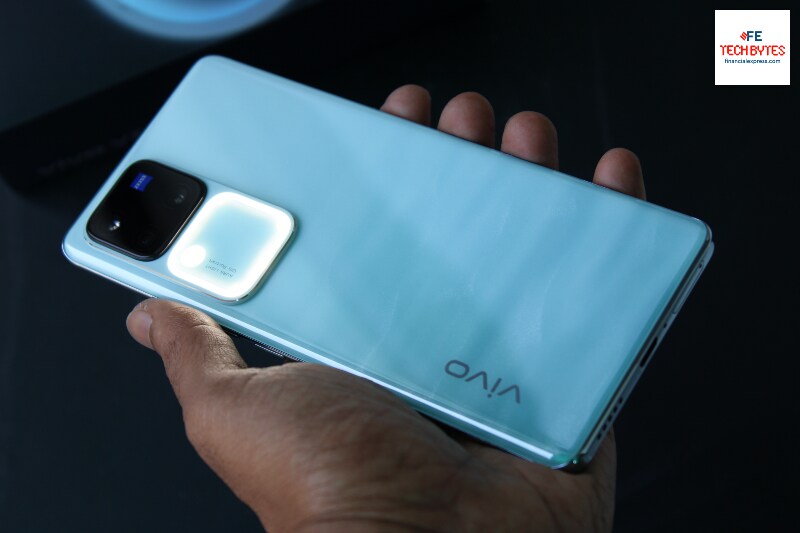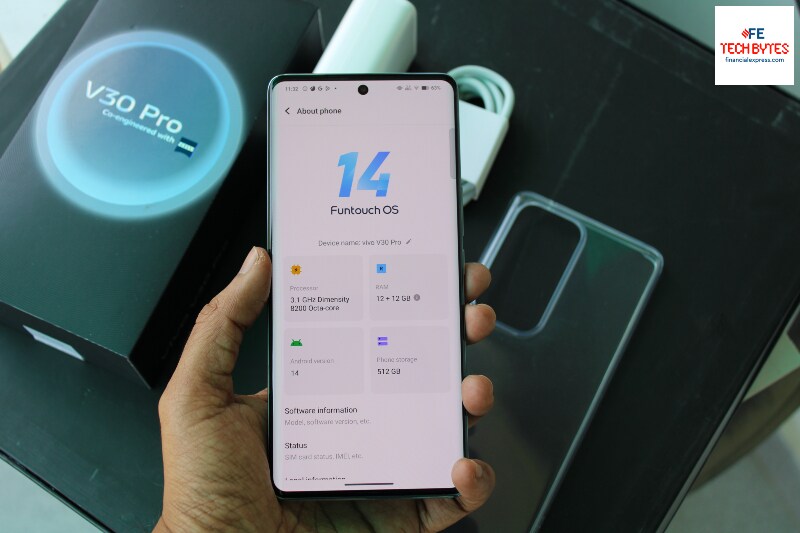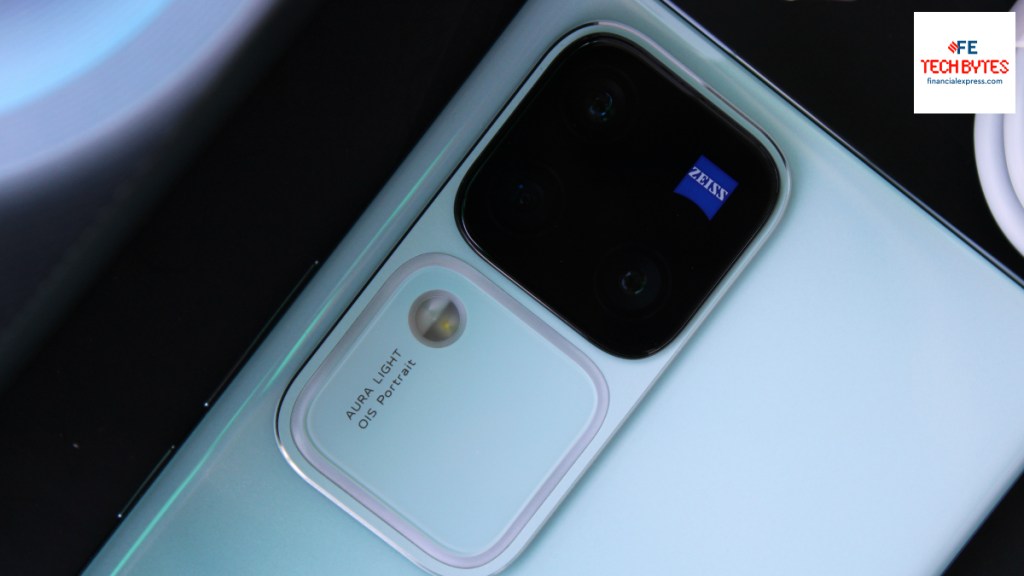Vivo has launched the V30 series in India today, per schedule. The big new update is that the pro model— Vivo V30 Pro— brings ZEISS optics to a lower price point. So far, the “collaboration” was exclusive to the company’s more premium X-series devices.
The V-series, which is known for its exquisite design and top-notch camera capabilities, is one of Vivo’s most sought-after product lines playing a key role in increasing its market share from just 3 percent in 2020 to 22 percent in the second quarter of 2023. The V30 Pro builds on top of these core strengths and adds a bit of extra flair— X-factor if you will— to an already competent package of last year’s V29 Pro.
Vivo V30 series cameras
The V30 Pro has a new triple camera setup on the rear headlined by a 50-megapixel Sony IMX920 “VCS” (short for Vivo Camera Bionic Spectrum) primary sensor with an optically stabilised f/1.88 aperture lens. It is paired to a 50-megapixel Sony IMX816 2x telephoto (f/1.85) and another 50-megapixel Samsung JN1 f/2.0 ultrawide with autofocus. The front camera is also a 50-megapixel (JN1) with autofocus. All the cameras can record 4K (up to 30fps).
The ZEISS partnership isn’t “superficial” as you’d imagine as it goes deeper into the phone’s processing algorithm. The V30 Pro— like the X100 and X100 Pro— lets you choose between vivid and ZEISS natural colour profiles, the latter entailing more true-to-life photos, especially portraits. Portrait photography is unsurprisingly a big draw with the V30 Pro also getting specialised ZEISS effects or LUTs (or Lookup Tables) to mimic some of their most widely-renowned lenses from Biotar, Sonnar, to Planar and Distagon. The styling extends into the video side as well with “cinematic” recording.

Aura light, which Vivo introduced with the V27 series, is getting a “significant” upgrade in this generation in both form and function. For one, it’s no longer a small circle, but a square, and it gives you precise control over intensity/temperature. You can leave it on auto mode as well. The combination of a powerful camera setup and aura light makes for more detail and clarity in photos under low-light.
Vivo V30 series design and specs
The V30 Pro also has a new design but you can’t mistake it for any other phone, or even series. The “V-series vibe” is still intact. The back is made of glass. You can get it in a choice of blue with wavy patterns or the more conventional black which dazzles under direct sunlight (there is no crazy colour-changing motif this year). The sides are polycarbonate and glossy (and so they do pick up fingerprints easily).
The whole thing is unapologetically curved, just as it is exceptionally thin (7.85mm) and light (188g). But it doesn’t feel completely “weightless”. There’s a bit of “solid” in there which feels both premium and reassuring— and slippery. Only basic IP54 splash resistance is available. You start to appreciate Vivo’s creative choices even more when you realise that the V30 Pro, despite its many quirks, still gets a 5,000mAh battery (biggest in V-series history if I remember correctly). The phone easily lasts a full day and can top up (from flat to a 100 percent) in just 45 minutes using the 80W charger that comes in the box.

The rest of the V30 Pro is familiar. It has the same 6.78-inch 1.5K AMOLED display with a 120Hz refresh rate as the V29 Pro, though it can get brighter at up to 2,800nits and supports HDR10+ “officially”. Vivo clearly has a good thing going with the MediaTek Dimensity 8200, which could be the only plausible explanation why the V30 Pro has it (same as the V29 Pro and V27 Pro before it). It works, but at this point, it’s becoming more and more difficult to justify it. Much in the same way, it is difficult to digest that the V30 Pro will get only two major OS and three years of security updates. Or, why there is no NFC, faster Wi-Fi, or stereo speakers.
Especially when the pricing has shot up. The V30 Pro comes in at Rs 41,999 for a version with 8GB of RAM and 256GB of storage and can go up to Rs 46,999 for 12GB/512GB.
Vivo V30 series— Vivo V30
A more affordable option, Vivo V30, is launching alongside. Obviously, it skimps on the cameras and doesn’t get the ZEISS treatment, but if you can look past those “downgrades”, you’re getting mostly the same phone at a much lower price. The V30 has the same design and screen down to the peak brightness levels, the same software and battery, with the exception that it has a Qualcomm Snapdragon 7 Gen 3 instead. It starts at Rs 33,999 for 8GB/128GB. You can also get it in 8GB/256GB and 12GB/256GB trims for Rs 35,999 and Rs 37,999 respectively.
Follow FE Tech Bytes on Twitter, Instagram, LinkedIn, Facebook.








